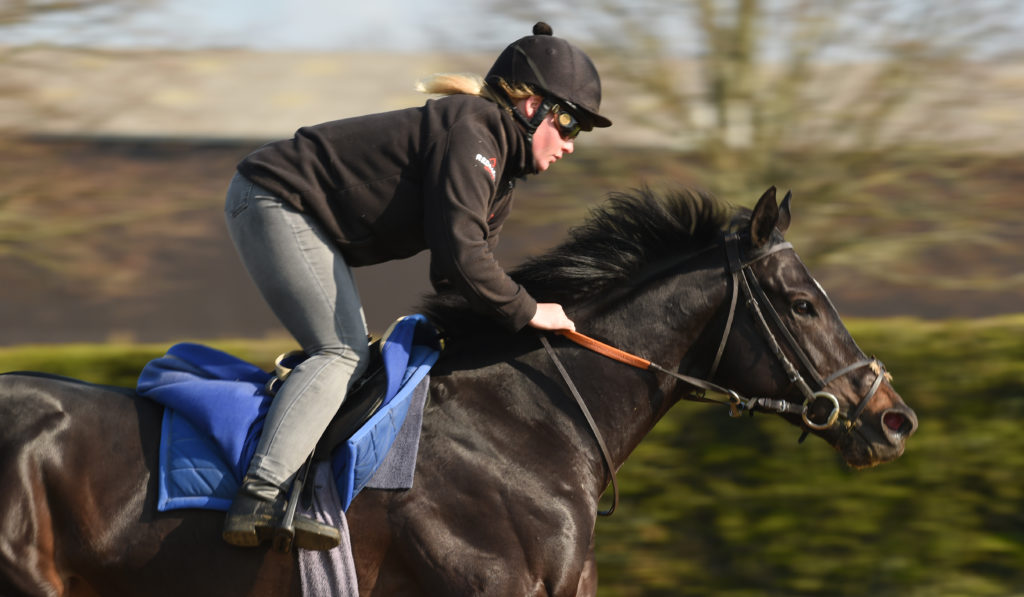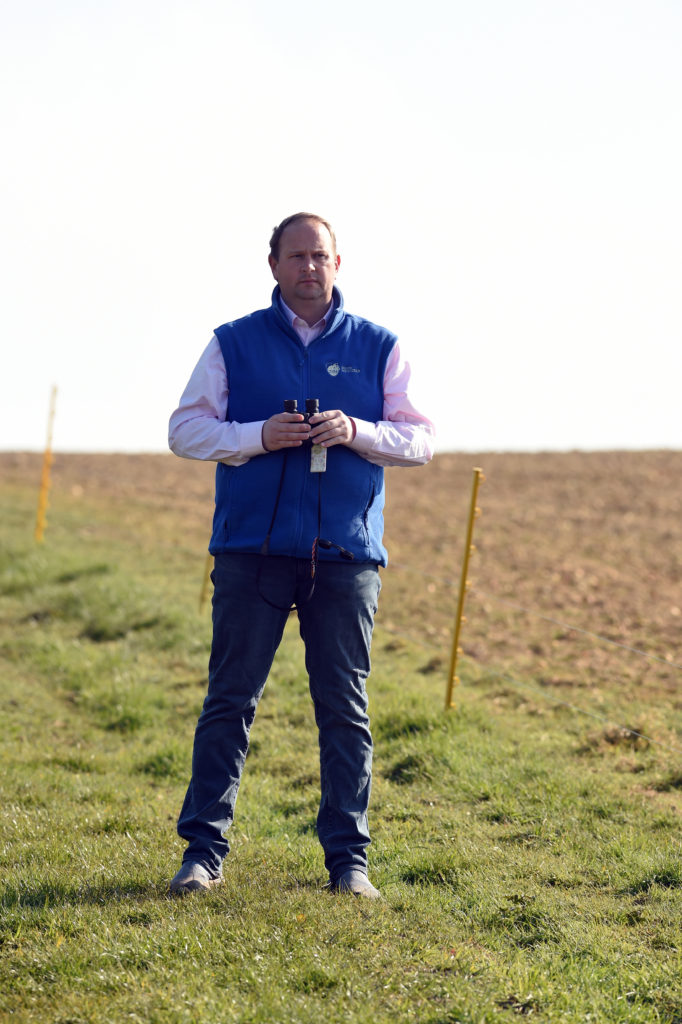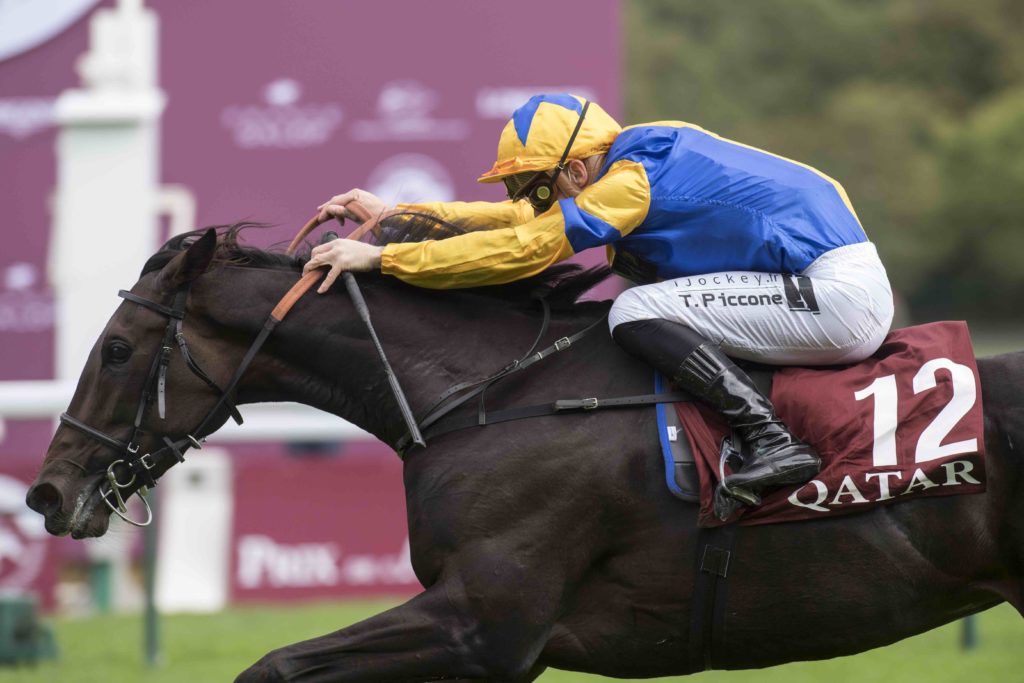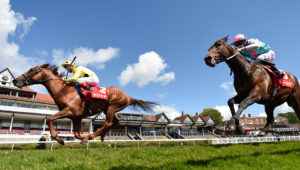For aspiring trainers in the modern era, the formula is simple. Recruit as many precocious two-year-olds as you can, run them hard, and hope to make an impact by the numbers.
Except that David Menuisier has done it the other way round. His first horses needed time, his early numbers were insignificant. He trained a solitary winner in 2014, his debut season, and just five the following year. Yet he starts 2021 with a string of more than 70, half of which are two-year-olds. How on earth did he do it?
Menuisier’s numbers only tell part of the story. His biggest triumphs have largely been gained outside Britain, which don’t show up on the stats. Only two of his eight Pattern-race triumphs have been gained at home. In prize-money terms the £266,000 he has banked from big-race wins in Britain pales by comparison to big-race earnings abroad in excess of £620,000.
When viewed through this prism, it becomes clear that Menuisier’s career graph is rising steeply. He has achieved it by espousing old-school values. Horses come first at the Coombelands Racing Stables he rents from Guy Harwood, whose daughter, Amanda Perrett, also trains on the property. They are given all the time they need.
A morning with Menuisier, 40, amplifies the point. Born and raised in France, he has lived in West Sussex for the last 15 years and developed an amusing line in derivatives of British idioms. He is emotional by nature with an understated sense of humour. And he is fastidious around horses.
Menuisier contrived his meticulous training regime by drawing on what he learnt under the wings of three world- class trainers. “From Criquette Head-Maarek I took everything,” he says. “It’s a philosophy; being aware of things. It’s not a job you learn from the books, it is nearly black magic. Criquette made me aware of what a trainer should feel. In some ways it is very old-fashioned. There is not much science behind it.”
From France he moved to Richard Mandella in California. “Richard was the most hands-on of the three,” Menuisier says. “He is a proper horseman; he never trains more than 40 horses at one time so he can make sure every single horse has individual treatment.”
After Mandella he ventured to Britain to work for the late John Dunlop. “From John I took confirmation that time is your best ally,” he reflects of seven years at Arundel. “And also, exploring and getting the taste of the handicap system, which I found very exciting. Without John, I would maybe not be as keen on British racing. With the handicapper it is like a game of cat and mouse.”
He couldn’t have asked for a finer tutor than Dunlop, who trained for plenty of British owner-breeders in an era when stamina wasn’t a dirty word. He’d start his staying three-year-olds over a mile, knowing full well they would flourish over longer trips. This ethos has rubbed off on Menuisier, who understands that a horse which antagonises the handicapper in its early runs is a lost cause.
Nevertheless, his respect for handicappers runs deep. “Sometimes they puzzle me but they are rarely wrong by very much,” he says with a smile. “I mentioned how I enjoy this game of chess on television last year and the handicapper must have been watching. The next time he gave a horse of mine a mark, it was 4lb too high.”

Four-year-old Flyin’ Solo is put through his paces by Emily Darby – Photo: Bill Selwyn
This aside arises during third lot, when horses go out of sight as they limber up to canter on a quiet Monday morning. Menuisier is all eyes when he is in their midst. Not a word is spoken as he assesses each one in turn. They then make their way to the gallops, which offers the opportunity for another observation.
“You can see that Guy Harwood was a genius,” Menuisier says of the retired trainer who numbered Dancing Brave among a herd of turf luminaries. “There are little things about what he built here; how horses must pass through a starting stall to get to one of the gallops. Unbelievable man. Very ahead of his time.”
When the horses reappear they have trotted for seven furlongs, after which they are reassessed as they file past. They then breeze a first time, after which Menuisier speaks to each rider individually. “If I am not completely happy, the horse will go in,” he says. “The rest will do a second canter.”
And after that second canter, horses walk up and down a driveway to cool off, rather than round in circles. “I prefer that,” Menuisier says. “Otherwise I think they get bored.”
It’s a time-consuming process for all, including the staff, who still “do their three” every morning before riding out. But it has served Menuisier well. It has been a long and patient journey for him and his horses to get this far. He is not about to compromise.
“I feel that if horses don’t have the strength, they cannot improve and are more likely to get injured,” he says. “I’d rather give them time to come to themselves. Then you can be ahead of the handicapper.”
This approach contradicts the assumption that today’s owners want an assessment of their horse sooner rather than later. How does Menuisier break it to an owner that his back-end three-year-old is never going to cut it when the owner has already paid two years’ worth of bills?
“Ah, no,” he replies. “Sometimes you have to wait until a horse is four, but even if it is backward, it will show you something one morning. It’s the spark that makes you wait until you see it on a more regular basis. If they don’t show me that spark, I will tell the owner to pull the plug.
“We do things in our own time,” he continues, “and the owners we attract are of a similar view. People tend to put a tag on you, and to be fair, backward horses are the kind I prefer if I had the choice. I’d be happy to have precocious two-year- olds but I love horses that race over a mile and beyond. With sprinters you are in the hands of God. You need everything to go your way.”
He also savours the privacy of Coombelands, where he pulls out at different times to Perrett. “And if we get a good horse we don’t have the pressure of the media, as they do at big training centres,” he says. “Horses are not like clockwork. Even Thundering Blue as a five-year-old didn’t always work well.”

David Menuisier is not afraid to send his horses around the world in search of the biggest prizes on offer – Photo: Bill Selwyn
Mention of Thundering Blue takes Menuisier back to when it all started. His first owner was Gail Brown, who he knew from his time with Dunlop, and whose racing club sent him two of the four horses he started with in 2015. While with Dunlop he also met Clive Washbourn, who promised Menuisier he would back him if he proved he could train winners.
“I said to Clive it was a Catch-22,” Menuisier reflects. “Without horses, I cannot win races. He told me I would find a way.” When he did, Washbourn was as good as his word.
“We won our first race at Newcastle on August 25, 2014,” Menuisier relates, the date seared into his memory. “Slunovrat was the last horse my parents bred and it was magical; the best day of my life. The next morning Clive called to say well done, and asked me to buy him some horses.”
Thundering Blue was among the first of them. Bought at the breeze-ups, the roan didn’t win his first race until halfway through his four-year-old campaign but caught fire thereafter.
The following season he won the Group 2 York Stakes and finished third in the International Stakes. From there he rebounded to win the valuable Stockholm Cup before finishing runner-up in the Canadian International at Woodbine.
The following year Menuisier saddled Danceteria, part-owned by Washbourn, to win the Group 1 Grosser Dallmayr-Preis in Munich. He was well on his way.
Menuisier’s regular sorties to France may have boosted his bank balance but Menuisier pays little attention to the ongoing prize-money debate in Britain. “I’m not a politician,” he says, “but everyone knows what the problem is. What I do know is that it would take someone like Winston Churchill to sort it out, or maybe Margaret Thatcher.”
It is British racing’s prestige, rather than prize-money, that enamours Menuisier.
He cannot imagine living anywhere other than West Sussex, which he and his partner, Kim Johnstone, find idyllic. There was never any inclination to start his career in France.
“I always say I love the weather in Britain,” he says, grinning. “But no, we have the best of both worlds here because France is so close. We should never take it for granted but Britain is where the big owners want to be. It’s also very hard to build a stable from scratch in France, like we have here. Young trainers there are struggling even if they are well connected.”
Some big owners have now gravitated to Coombelands, where Menuisier can rent barn space as and when his numbers warrant it. Recent converts to his corner include the enthusiastic Saudi patron Abdullah Al Maddah, the Coopers’ Normandie Stud and Andrew Black’s Chasemore Farm.
He enjoys training for owner-breeders, who account for around half of his string. “They share the same mindset as we do,” he says. “That was always our aim, rather than to be fashionable. I feel blessed, I really do. We have been very lucky with our horses and our staff. We couldn’t have asked for more.”
Luck has played little part in Menuisier’s achievements to date. The man who dared to swim against the tide in accordance with his beliefs is reaping his just rewards.

Wonderful Tonight wins the Group 1 Prix de Royallieu under Tony Piccone – Photo: George Selwyn
Iron Lady targets Paris again
Last season marked a breakthrough for David Menuisier on many fronts. His tally of 18 winners in Britain was a personal best but his handling of Wonderful Tonight, owned by music impresario Chris Wright, took the plaudits. It showed he knew exactly how to get the best from a top-class horse.
Having won a Saint-Cloud maiden by a short-head at two, Wonderful Tonight advanced to win two Group 1 races at three, the second of them at Ascot on Champions Day. The daughter of Le Havre was thus an enticing broodmare prospect, so it came as a huge vote of confidence when Wright asked Menuisier to campaign her again this season.
“Before she ever ran I told Chris she was the best filly I had ever dealt with,” says the trainer who assisted the likes of Criquette Head-Maarek, Richard Mandella and John Dunlop. “She is amazing. Even when she was very weak as a two- year-old, she was made of iron. Her temperament; everything about her was exceptional. But what I really like about her is that she is all Montjeu [who is her broodmare sire].”
Menuisier comes close to tears when he recalls last season’s highs: how he stood alone before a television set at Lingfield in August, cheering like a man deranged as Wonderful Tonight won the Group 3 Prix Minerve at Deauville. He could barely speak after Wonderful Tonight landed the Fillies and Mares Stakes on Champions Day.
Having won the Group 1 Prix Royallieu on Arc weekend, all roads now lead to the Prix de l’Arc de Triomphe itself. Menuisier has yet to plot a precise course to Longchamp but will be governed by the filly’s penchant for easy ground.
“I am trying to delay her seasonal debut,” he says. “She’s not one you can train, give her a break and start again. She has to keep running when she is in good nick but there are only so many battles you can fight. I don’t want her to fight the wrong ones.”
If the ground at Longchamp in October is anything like as testing as it was in the previous two years, the filly could well give connections a night to remember.



